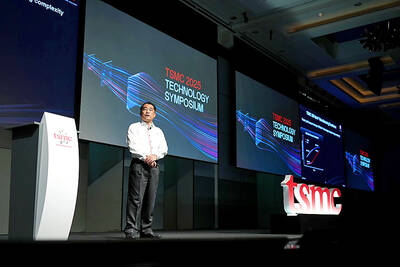The US economy expanded at a slower rate in the first quarter than originally estimated, the Commerce Department reported on Thursday, partly because of a slight decrease in the pace of consumer spending.
However, the status of the recovery still hinges on the prospects for job growth, analysts said.
The revised measure of the overall economy grew at an inflation-adjusted annual rate of 3 percent in the first quarter, down from the earlier estimate of 3.2 percent, the department said. Economists had forecast growth of 3.5 percent.
“The economy is still showing above-trend growth in the first quarter, and we think the economy is continuing to grow,” said Michael Feroli, US economist for JP Morgan Economics.
The 3 percent growth follows 5.6 percent in the fourth quarter of last year and 2.2 percent in the third.
One contributing factor to the revision was consumer spending, which was lowered to 3.5 percent, from 3.6 percent. Other factors in the revision included a decline in the purchases of business equipment and software and a sharp increase in imports, which helped widen the trade deficit. Spending on durable goods, like cars, grew 12.2 percent in the first quarter, compared with 0.4 percent in the previous three months.
With more than 70 percent of the economy composed of consumer spending, economists are pinning their hopes for a sustainable economic recovery on robust purchasing by households, much of which depends on consumer sentiment and job creation.
Joshua Shapiro, chief US economist for MFR, an economics consultancy, said that the latest GDP figures confirmed his view that the economy was growing at a moderate pace, albeit aided by government stimulus. Shapiro said he expected overall annualized growth of between 2.5 percent and 3 percent for the rest of the year.
The biggest debate, he said, is over the path of the recovery of the labor market and how it helps the ability of consumers to promote growth.
“An enormous amount hinges on the rate of job growth that we are going to see on a sustained basis,” he said.
The economy added 290,000 jobs last month — the largest gain in four years — across a broad swath of industries.
Still, the Labor Department said yesterday that initial jobless claims fell slightly to 460,000 in the week of May 22, down by 14,000. While the weekly level exceeded analysts’ expectations, total jobless claims still inspired a sober outlook.
“We continue to believe that an imminent and sustained burst of hiring sufficient to meaningfully impact the unemployment rate remains elusive,” Dan Greenhaus, the chief economic strategist for Miller Tabak & Co, wrote in a research note.
The latest job figures have been inflated by the hiring of temporary workers for the census, and Shapiro said those workers would continue to add to payrolls in the next few months.
The first-quarter GDP rate also showed downward revisions of government spending. Federal government spending grew at an annualized rate of 1.2 percent in the first quarter, down from the original estimate of 1.4 percent. Local and state governments continued to cut spending for the third consecutive quarter.
Greenhaus said he believed any additional federal stimulus might be directed to state and local governments.
Feroli also said that Thursday’s report revised labor income in the fourth quarter to US$7.74 trillion, from about US$7.77 trillion.
“It tells you on balance that labor is now getting a smaller share of the pie than we had previously thought,” he said.
Employees’ income rose in the first quarter of this year to US$7.80 trillion, the government said.

DEMOGRAPHICS: Robotics is the most promising answer to looming labor woes, the long-term care system and national contingency response, an official said Taiwan is to launch a five-year plan to boost the robotics industry in a bid to address labor shortages stemming from a declining and aging population, the Executive Yuan said yesterday. The government approved the initiative, dubbed the Smart Robotics Industry Promotion Plan, via executive order, senior officials told a post-Cabinet meeting news conference in Taipei. Taiwan’s population decline would strain the economy and the nation’s ability to care for vulnerable and elderly people, said Peter Hong (洪樂文), who heads the National Science and Technology Council’s (NSTC) Department of Engineering and Technologies. Projections show that the proportion of Taiwanese 65 or older would

Nvidia Corp yesterday unveiled its new high-speed interconnect technology, NVLink Fusion, with Taiwanese application-specific IC (ASIC) designers Alchip Technologies Ltd (世芯) and MediaTek Inc (聯發科) among the first to adopt the technology to help build semi-custom artificial intelligence (AI) infrastructure for hyperscalers. Nvidia has opened its technology to outside users, as hyperscalers and cloud service providers are building their own cost-effective AI chips, or accelerators, used in AI servers by leveraging ASIC firms’ designing capabilities to reduce their dependence on Nvidia. Previously, NVLink technology was only available for Nvidia’s own AI platform. “NVLink Fusion opens Nvidia’s AI platform and rich ecosystem for

Taiwan Semiconductor Manufacturing Co (TSMC, 台積電) yesterday said it is building nine new advanced wafer manufacturing and packaging factories this year, accelerating its expansion amid strong demand for high-performance computing (HPC) and artificial intelligence (AI) applications. The chipmaker built on average five factories per year from 2021 to last year and three from 2017 to 2020, TSMC vice president of advanced technology and mask engineering T.S. Chang (張宗生) said at the company’s annual technology symposium in Hsinchu City. “We are quickening our pace even faster in 2025. We plan to build nine new factories, including eight wafer fabrication plants and one advanced

‘WORLD’S LOSS’: Taiwan’s exclusion robs the world of the benefits it could get from one of the foremost practitioners of disease prevention and public health, Minister Chiu said Taiwan should be allowed to join the World Health Assembly (WHA) as an irreplaceable contributor to global health and disease prevention efforts, Minister of Foreign Affairs Lin Chia-lung (林佳龍) said yesterday. He made the comment at a news conference in Taipei, hours before a Taiwanese delegation was to depart for Geneva, Switzerland, seeking to meet with foreign representatives for a bilateral meeting on the sidelines of the WHA, the WHO’s annual decisionmaking meeting, which would be held from Monday next week to May 27. As of yesterday, Taiwan had yet to receive an invitation. Taiwan has much to offer to the international community’s